
Natural Resources
Conservation Service
Ecological site F116AY022MO
Talus Footslope Forest
Last updated: 9/24/2020
Accessed: 12/22/2025
General information
Provisional. A provisional ecological site description has undergone quality control and quality assurance review. It contains a working state and transition model and enough information to identify the ecological site.
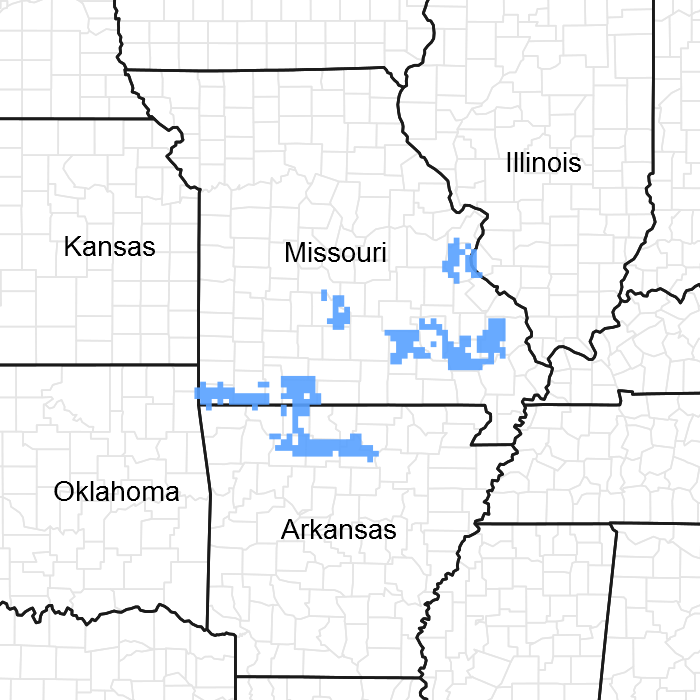
Figure 1. Mapped extent
Areas shown in blue indicate the maximum mapped extent of this ecological site. Other ecological sites likely occur within the highlighted areas. It is also possible for this ecological site to occur outside of highlighted areas if detailed soil survey has not been completed or recently updated.
MLRA notes
Major Land Resource Area (MLRA): 116A–Ozark Highland
The Ozark Highland constitutes the Salem Plateau of the Ozark Uplift. Elevation ranges from about 300 feet on the southeast edge of the Ozark escarpment, to about 1,600 feet in the west, adjacent to the Burlington Escarpment of the Springfield Plateau. The underlying bedrock is mainly horizontally bedded Ordovician-aged dolomites and sandstones that dip gently away from the uplift apex in southeast Missouri. Cambrian dolomites are exposed on deeply dissected hillslopes. In some places, Pennsylvanian and Mississipian sediments overlie the plateau. Relief varies, from the gently rolling central plateau areas to deeply dissected hillslopes associated with drainageways such as the Buffalo, Current, Eleven Point and White Rivers.
Classification relationships
Terrestrial Natural Community Type in Missouri (Nelson, 2010):
The reference state for this ecological site is most similar to a Limestone/Dolomite Talus community.
Missouri Department of Conservation Forest and Woodland Communities (MDC, 2006):
The reference state for this ecological site is not correlated to a MDC community.
National Vegetation Classification System Vegetation Association (NatureServe, 2010):
The reference state for this ecological site is most similar to a Quercus alba - Quercus rubra - Acer saccharum - Carya cordiformis / Lindera benzoin Forest (CEGL002058).
Geographic relationship to the Missouri Ecological Classification System (Nigh & Schroeder, 2002):
This ecological site occurs primarily within the following Subsections:
Black River Ozark Border
Inner Ozark Border
St. Francois Knobs and Basins
Ecological site concept
NOTE: This is a “provisional” Ecological Site Description (ESD) that is under development. It contains basic ecological information that can be used for conservation planning, application and land management. After additional information is collected, analyzed and reviewed, this ESD will be refined and published as “Approved”.
The Talus Footslope Forests are associated with the deeply dissected valleys of major Ozark rivers, such as the Current, Jacks Fork and Black. Soils are very deep, with an abundance of limestone/dolomite coarse fragments. The reference plant community is forest with an overstory dominated by sugar maple, northern red oak, and basswood, an understory dominated by pawpaw, American bladdernut, Ohio buckeye and wild hydrangea, and a rich herbaceous ground flora.
Associated sites
| R116AY017MO |
Dolomite Exposed Cliff Dolomite Exposed Cliffs are upslope, with southern to western exposures. |
|---|---|
| R116AY020MO |
Shallow Dolomite Upland Glade/Woodland Shallow Dolomite Glade/Woodlands are upslope. |
| F116AY016MO |
Chert Dolomite Protected Backslope Forest Chert Dolomite Protected Backslope Forest are upslope, on steep lower backslopes with northern to eastern exposures. |
| F116AY037MO |
Gravelly/Loamy Upland Drainageway Forest Gravelly/Loamy Upland Drainageway Forests are often downslope. |
| F116AY048MO |
Chert Dolomite Exposed Backslope Woodland Chert Dolomite Exposed Backslope Woodlands are upslope, on steep lower backslopes with southern to western aspects. |
| R116AY014MO |
Dolomite Protected Cliff Dolomite Protected Cliffs are upslope, with northern to eastern exposures. |
Similar sites
| F116AY022MO |
Talus Footslope Forest Talus Footslope Forests have no similar ecological sites. |
|---|
Table 1. Dominant plant species
| Tree |
(1) Quercus rubra |
|---|---|
| Shrub |
(1) Aesculus glabra |
| Herbaceous |
(1) Hepatica nobilis var. acuta |
Physiographic features
This site is on lower backslopes with slopes of 35 to 90 percent. The site generates runoff to adjacent, downslope ecological sites, and in places receives runoff from upslope summit and shoulder sites. This site does not flood.
The following figure (adapted from Tummons and Struckhoff, 1990) shows a typical landscape position of this ecological site, and landscape relationships among the other ecological sites of the uplands. This site is within the area labeled as “4” on the figure, and typically contains or is adjacent to an upland drainageway. Shallow Dolomite Glade/ Woodland sites generally occur in adjacent upslope positions.
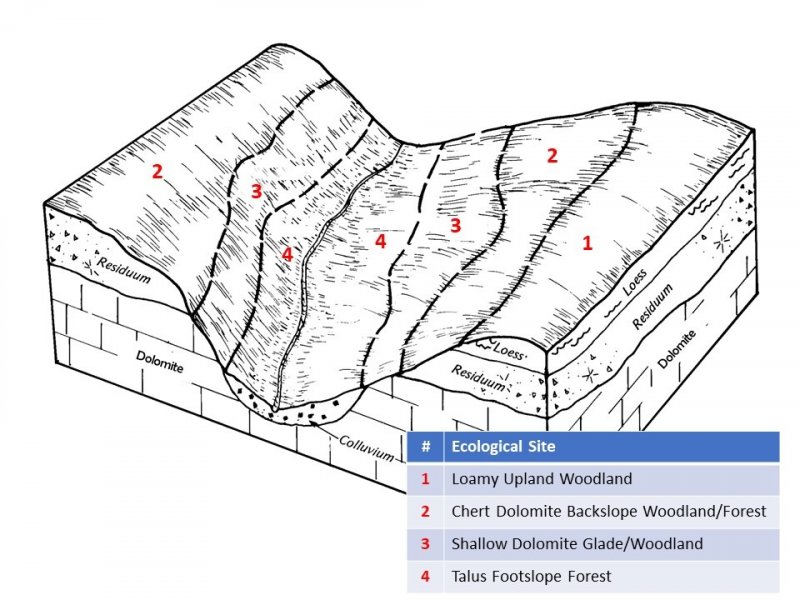
Figure 2. Landscape relationships for this ecological site.
Table 2. Representative physiographic features
| Landforms |
(1)
Talus slope
|
|---|---|
| Flooding duration | Brief (2 to 7 days) |
| Flooding frequency | None to rare |
| Ponding frequency | None |
| Slope | 35 – 90% |
| Water table depth | 60 in |
| Aspect | Aspect is not a significant factor |
Climatic features
The Ozark Highland has a continental type of climate marked by strong seasonality. In winter, dry-cold air masses, unchallenged by any topographic barriers, periodically swing south from the northern plains and Canada. If they invade reasonably humid air, snowfall and rainfall result. In summer, moist, warm air masses, equally unchallenged by topographic barriers, swing north from the Gulf of Mexico and can produce abundant amounts of rain, either by fronts or by convectional processes. In some summers, high pressure stagnates over the region, creating extended droughty periods. Spring and fall are transitional seasons when abrupt changes in temperature and precipitation may occur due to successive, fast-moving fronts separating contrasting air masses.
The Ozark Highland experiences regional differences in climates, but these differences do not have obvious geographic boundaries. Regional climates grade inconspicuously into each other. The basic gradient for most climatic characteristics is along a line crossing the MLRA from northwest to southeast.
The average annual precipitation in almost all of this area is 38 to 45 inches. Snow falls nearly every winter, but the snow cover lasts for only a few days. The average annual temperature is about 53 to 60 degrees F. The lower temperatures occur at the higher elevations in the western part of the MLRA. Mean January minimum temperature follows a stronger north-to-south gradient. However, mean July maximum temperature shows hardly any geographic variation in the MLRA. Mean July maximum temperatures have a range of only two or three degrees across the area.
Mean annual precipitation varies along a northwest to southeast gradient. Seasonal climatic variations are more complex. Seasonality in precipitation is very pronounced due to strong continental influences. June precipitation, for example, averages three to four times greater than January precipitation. Most of the rainfall occurs as high-intensity, convective thunderstorms in summer.
During years when precipitation comes in a fairly normal manner, moisture is stored in the top layers of the soil during the winter and early spring, when evaporation and transpiration are low. During the summer months the loss of water by evaporation and transpiration is high, and if rainfall fails to occur at frequent intervals, drought will result. Drought directly affects plant and animal life by limiting water supplies, especially at times of high temperatures and high evaporation rates.
Superimposed upon the basic MLRA climatic patterns are local topographic influences that create topoclimatic, or microclimatic variations. In regions of appreciable relief, for example, air drainage at nighttime may produce temperatures several degrees lower in valley bottoms than on side slopes. At critical times during the year, this phenomenon may produce later spring or earlier fall freezes in valley bottoms. Deep sinkholes often have a microclimate significantly cooler, moister, and shadier than surrounding surfaces, a phenomenon that may result in a strikingly different ecology. Higher daytime temperatures of bare rock surfaces and higher reflectivity of these unvegetated surfaces may create distinctive environmental niches such as glades and cliffs.
Slope orientation is an important topographic influence on climate. Summits and south-and-west-facing slopes are regularly warmer and drier than adjacent north- and-east-facing slopes. Finally, the climate within a canopied forest is measurably different from the climate of a more open grassland or savanna areas.
Source: University of Missouri Climate Center - http://climate.missouri.edu/climate.php; Land Resource Regions and Major Land Resource Areas of the United States, the Caribbean, and the Pacific Basin, United States Department of Agriculture Handbook 296 - http://soils.usda.gov/survey/geography/mlra/
Table 3. Representative climatic features
| Frost-free period (characteristic range) | 153-160 days |
|---|---|
| Freeze-free period (characteristic range) | 180-191 days |
| Precipitation total (characteristic range) | 46-49 in |
| Frost-free period (actual range) | 151-162 days |
| Freeze-free period (actual range) | 178-193 days |
| Precipitation total (actual range) | 46-50 in |
| Frost-free period (average) | 157 days |
| Freeze-free period (average) | 186 days |
| Precipitation total (average) | 48 in |
Figure 3. Monthly precipitation range
Figure 4. Monthly minimum temperature range
Figure 5. Monthly maximum temperature range
Figure 6. Monthly average minimum and maximum temperature
Figure 7. Annual precipitation pattern
Figure 8. Annual average temperature pattern
Climate stations used
-
(1) EMINENCE 1 N [USC00232619], Eminence, MO
-
(2) CLEARWATER DAM [USC00231674], Ellington, MO
-
(3) MARBLE HILL [USC00235253], Marble Hill, MO
Influencing water features
The site generates runoff to adjacent, downslope ecological sites, and in places receives runoff from upslope summit and shoulder sites. The hydrological behavior of these slope deposits depends on the season. In the dry season, the water infiltrates and these is no visible outlet. During the wet season, one-part soaks in and creates springs down slope and the other part runs off. The lag times are dependent upon the type of talus material.
Soil features
These soils have no rooting restriction. Although the soils were formed under woodland vegetation, they have dark, organic-rich surface horizons. Parent material is slope alluvium from limestone and dolomite residuum. These soils have silty clay loam surface horizons with high amounts of dolomite and limestone channers and flags, and have skeletal, clayey subsoils. They are not affected by seasonal wetness. Soil series associated with this site include Brussels.
Table 4. Representative soil features
| Parent material |
(1)
Slope alluvium
–
limestone and dolomite
|
|---|---|
| Surface texture |
(1) Gravelly silty clay loam (2) Very channery |
| Family particle size |
(1) Clayey |
| Drainage class | Well drained |
| Permeability class | Very slow |
| Soil depth | 72 in |
| Surface fragment cover <=3" | 10 – 25% |
| Surface fragment cover >3" | 5 – 45% |
| Available water capacity (0-40in) |
3 – 5 in |
| Calcium carbonate equivalent (0-40in) |
5% |
| Electrical conductivity (0-40in) |
2 mmhos/cm |
| Sodium adsorption ratio (0-40in) |
Not specified |
| Soil reaction (1:1 water) (0-40in) |
6.1 – 8.2 |
| Subsurface fragment volume <=3" (Depth not specified) |
5 – 40% |
| Subsurface fragment volume >3" (Depth not specified) |
5 – 70% |
Ecological dynamics
Information contained in this section was developed using historical data, professional experience, field reviews, and scientific studies. The information presented is representative of very complex vegetation communities. Key indicator plants, animals and ecological processes are described to help inform land management decisions. Plant communities will differ across the MLRA because of the naturally occurring variability in weather, soils, and aspect. The Reference Plant Community is not necessarily the management goal. The species lists are representative and are not botanical descriptions of all species occurring, or potentially occurring, on this site. They are not intended to cover every situation or the full range of conditions, species, and responses for the site.
This community develops at the base of slopes on rock fragments derived from the weathering and erosion of cliff and steeply sloping uplands. Large masses of accumulated angular rock fragments, stones and boulders make up the primary substrate. The resulting soils are moderately well to well-drained.
In this region, talus forests are flanked by historic fire-prone prairies, savannas and open woodlands, but occur in protected landscape positions on lower, steep slopes in the deeper valleys. Although fire infrequently spread (estimated every 10 to 25 years) into this reference community the resulting canopy is still somewhat open (50 to 70 percent canopy cover), tall (80 to 90 feet), and dominated by woody species such as chinkapin oak, northern red oak, and basswood.
Typical understory species include buckeye, pawpaw, American bladdernut and wild hydrangea. The ground flora has many spring ephemerals and other shade loving herbaceous plant species. In addition, the limestone rocks and boulders provide habitat for a variety of mosses, lichens, liverwort and ferns, as well as reptiles and amphibians.
In addition, Talus Footslope Forests are subject to occasional disturbances from wind and ice, which periodically open the canopy up by knocking over trees or breaking substantial branches of canopy trees. In addition, the rock masses actively move downward, sometimes causing damage and slumping of trees and other woody vegetation.
Because of the steepness and rocky nature of the substrate, domestic grazing has not had any impact on most of these sites. These ecological sites are moderately productive sites. Because these sites tend to be somewhat isolated and rocky, timber harvesting is somewhat limited.
Single tree selection timber harvests are common in this type of community and often results in removal of the most productive trees (high grading) in the stand leading to poorer quality timber and a shift in species composition away from more valuable oak species. Better planned single tree selection or the creation of group openings can help regenerate and maintain more species and increase vigor on the residual trees.
A State and Transition Diagram follows. Detailed descriptions of each state, transition, plant community, and pathway follow the model. This model is based on available experimental research, field observations, professional consensus, and interpretations. It is likely to change as knowledge increases.
State and transition model
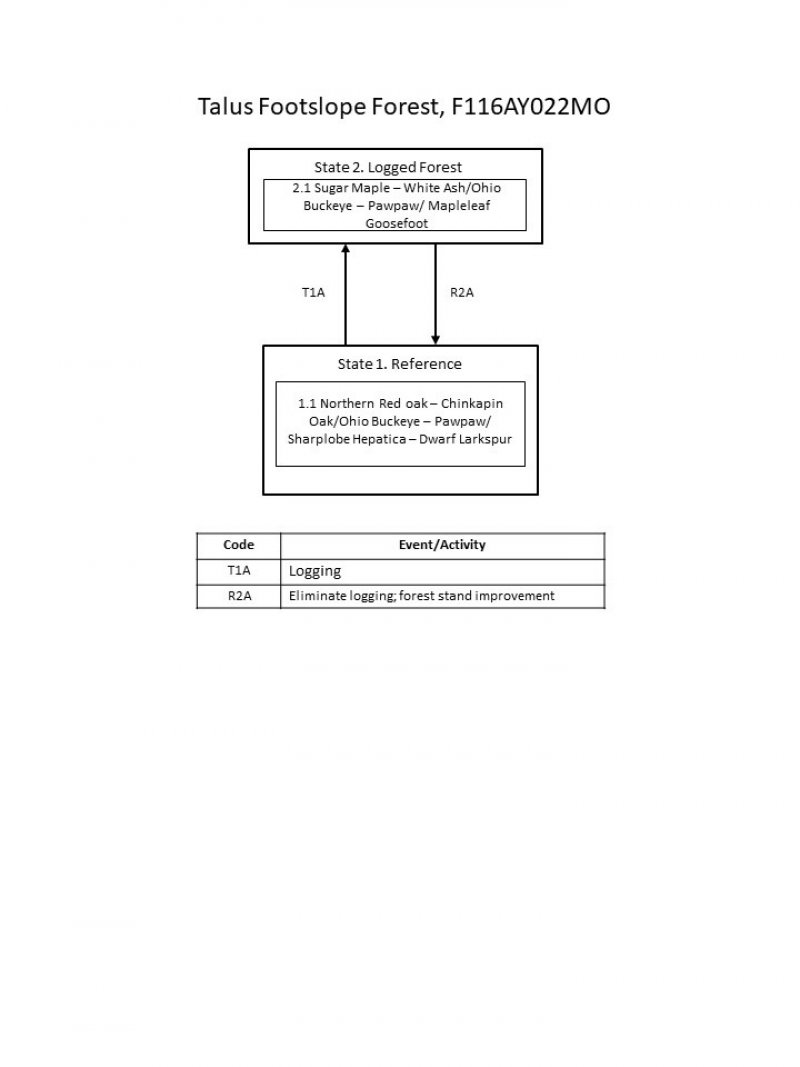
Figure 9. State and transition diagram for this ecological site
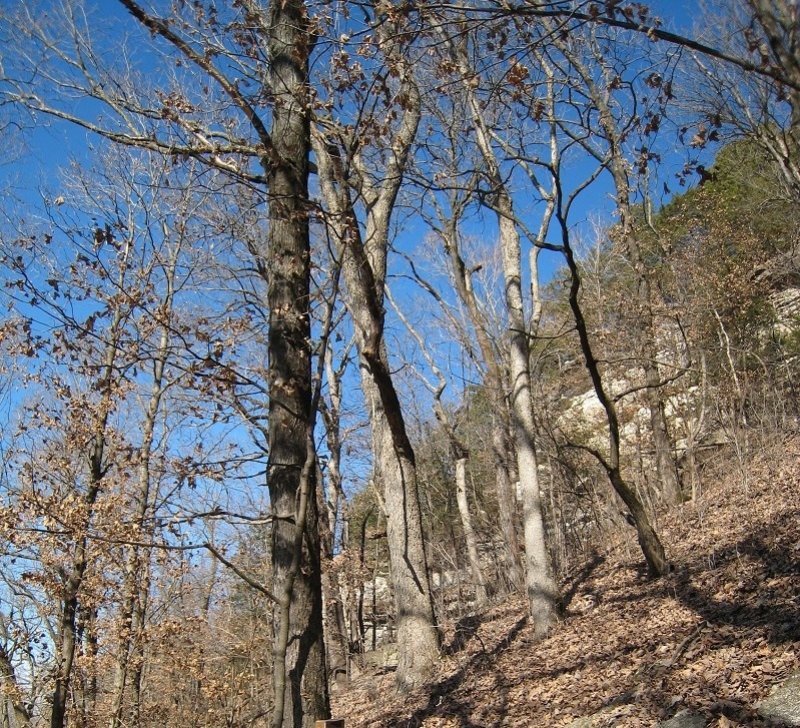
Figure 10. Reference talus ecological site in Missouri; photo credit MDC.
More interactive model formats are also available.
View Interactive Models
More interactive model formats are also available.
View Interactive Models
Click on state and transition labels to scroll to the respective text
Ecosystem states
State 1 submodel, plant communities
State 2 submodel, plant communities
State 1
Reference
Talus forests occur in landscape positions on lower, steep slopes in the deeper valleys. Although fire infrequently spread (estimated every 10 to 25 years) into this reference community the resulting canopy is still somewhat open (50 to 70 percent canopy cover), tall (80 to 90 feet), and dominated by woody species such as chinkapin oak, northern red oak, and American basswood.
Community 1.1
Northern Red oak – Chinkapin Oak/Ohio Buckeye – Pawpaw/Sharp-lobed Hepatica – Dwarf Larkspur
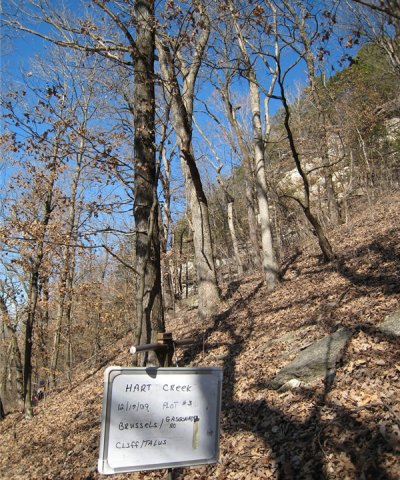
Figure 11. Talus and cliff ecological reference sites at Hart Creek Conservation Area, Missouri; photo credit - Dennis Meinert, MDNR
Forest overstory. Forest Overstory Species list is based on field reconnaissance as well as commonly occurring species listed in Nelson 2010; names and symbols are from USDA PLANTS database.
Forest understory. Forest Understory Species list is based on field reconnaissance as well as commonly occurring species listed in Nelson 2010; names and symbols are from USDA PLANTS database.
State 2
Logged Forest
Single tree selection timber harvests are common in this state and often results in removal of the most productive trees (high grading) in the stand leading to poorer quality timber and a shift in species composition away from more valuable oak species. More shade tolerant species such as sugar maple tend to increase in dominance after repeated harvests.
Community 2.1
Sugar Maple – White Ash/Ohio Buckeye – Pawpaw/ Mapleleaf Goosefoot
Forest overstory. The Overstory Species list is based on field surveys and commonly occurring species listed in Nelson (2010).
Forest understory. The Understory Species list is based on field surveys and commonly occurring species listed in Nelson (2010).
Transition T1A
State 1 to 2
This transition typically results from periodic timber harvesting.
Restoration pathway R2A
State 2 to 1
This restoration pathway is the result of eliminating logging, extending rotations that allow mature trees to exceed ages of about 120 years and using forest stand improvement practices.
Additional community tables
Table 5. Community 1.1 forest overstory composition
| Common name | Symbol | Scientific name | Nativity | Height (ft) | Canopy cover (%) | Diameter (in) | Basal area (square ft/acre) |
|---|---|---|---|---|---|---|---|
|
Tree
|
|||||||
| chinquapin oak | QUMU | Quercus muehlenbergii | Native | – | – | – | – |
| sugar maple | ACSA3 | Acer saccharum | Native | – | – | – | – |
| American basswood | TIAM | Tilia americana | Native | – | – | – | – |
| northern red oak | QURU | Quercus rubra | Native | – | – | – | – |
| bitternut hickory | CACO15 | Carya cordiformis | Native | – | – | – | – |
| white ash | FRAM2 | Fraxinus americana | Native | – | – | – | – |
| Ohio buckeye | AEGL | Aesculus glabra | Native | – | – | – | – |
Table 6. Community 1.1 forest understory composition
| Common name | Symbol | Scientific name | Nativity | Height (ft) | Canopy cover (%) | |
|---|---|---|---|---|---|---|
|
Forb/Herb
|
||||||
| jewelweed | IMCA | Impatiens capensis | Native | – | – | |
| dwarf larkspur | DETR | Delphinium tricorne | Native | – | – | |
| mapleleaf goosefoot | CHSI2 | Chenopodium simplex | Native | – | – | |
| jumpseed | POVI2 | Polygonum virginianum | Native | – | – | |
| bloodroot | SACA13 | Sanguinaria canadensis | Native | – | – | |
| goldenseal | HYCA | Hydrastis canadensis | Native | – | – | |
| feathery false lily of the valley | MARA7 | Maianthemum racemosum | Native | – | – | |
| Canadian clearweed | PIPU2 | Pilea pumila | Native | – | – | |
| tasselflower brickellbush | BRGR | Brickellia grandiflora | Native | – | – | |
| whiteflower leafcup | POCA11 | Polymnia canadensis | Native | – | – | |
| Standley's goosefoot | CHST2 | Chenopodium standleyanum | Native | – | – | |
| wild sarsaparilla | ARNU2 | Aralia nudicaulis | Native | – | – | |
| sharplobe hepatica | HENOA | Hepatica nobilis var. acuta | Native | – | – | |
| wingstem | VEAL | Verbesina alternifolia | Native | – | – | |
| cutleaf coneflower | RULA3 | Rudbeckia laciniata | Native | – | – | |
| wild blue phlox | PHDI5 | Phlox divaricata | Native | – | – | |
| shining bedstraw | GACO3 | Galium concinnum | Native | – | – | |
|
Fern/fern ally
|
||||||
| bulblet bladderfern | CYBU3 | Cystopteris bulbifera | Native | – | – | |
| walking fern | ASRH2 | Asplenium rhizophyllum | Native | – | – | |
| northern maidenhair | ADPE | Adiantum pedatum | Native | – | – | |
| brittle bladderfern | CYFR2 | Cystopteris fragilis | Native | – | – | |
|
Shrub/Subshrub
|
||||||
| American bladdernut | STTR | Staphylea trifolia | Native | – | – | |
| wild hydrangea | HYAR | Hydrangea arborescens | Native | – | – | |
|
Tree
|
||||||
| Ohio buckeye | AEGL | Aesculus glabra | Native | – | – | |
| pawpaw | ASTR | Asimina triloba | Native | – | – | |
Table 7. Community 2.1 forest overstory composition
| Common name | Symbol | Scientific name | Nativity | Height (ft) | Canopy cover (%) | Diameter (in) | Basal area (square ft/acre) |
|---|---|---|---|---|---|---|---|
|
Tree
|
|||||||
| chinquapin oak | QUMU | Quercus muehlenbergii | Native | – | – | – | – |
| black walnut | JUNI | Juglans nigra | Native | – | – | – | – |
| sugar maple | ACSA3 | Acer saccharum | Native | – | – | – | – |
| American basswood | TIAM | Tilia americana | Native | – | – | – | – |
| northern red oak | QURU | Quercus rubra | Native | – | – | – | – |
| bitternut hickory | CACO15 | Carya cordiformis | Native | – | – | – | – |
| white ash | FRAM2 | Fraxinus americana | Native | – | – | – | – |
| pawpaw | ASTR | Asimina triloba | Native | – | – | – | – |
| Ohio buckeye | AEGL | Aesculus glabra | Native | – | – | – | – |
Table 8. Community 2.1 forest understory composition
| Common name | Symbol | Scientific name | Nativity | Height (ft) | Canopy cover (%) | |
|---|---|---|---|---|---|---|
|
Forb/Herb
|
||||||
| Standley's goosefoot | CHST2 | Chenopodium standleyanum | Native | – | – | |
| wild sarsaparilla | ARNU2 | Aralia nudicaulis | Native | – | – | |
| sharplobe hepatica | HENOA | Hepatica nobilis var. acuta | Native | – | – | |
| dwarf larkspur | DETR | Delphinium tricorne | Native | – | – | |
| bloodroot | SACA13 | Sanguinaria canadensis | Native | – | – | |
| feathery false lily of the valley | MARAR | Maianthemum racemosum ssp. racemosum | Native | – | – | |
| great waterleaf | HYAP | Hydrophyllum appendiculatum | Native | – | – | |
|
Fern/fern ally
|
||||||
| bulblet bladderfern | CYBU3 | Cystopteris bulbifera | Native | – | – | |
| walking fern | ASRH2 | Asplenium rhizophyllum | Native | – | – | |
| northern maidenhair | ADPE | Adiantum pedatum | Native | – | – | |
| brittle bladderfern | CYFR2 | Cystopteris fragilis | Native | – | – | |
Interpretations
Animal community
Wildlife (MDC 2006):
Compositional diversity and cool, moist conditions make this an important habitat for many bird and amphibian species. Though typically small in extent, this natural community type lends diversity to the overall forested landscape.
This upland forest type adds species diversity and coarse woody debris loads making it very important for a number of songbirds and amphibians. These forests can provide good “old-growth” conditions with large diameter trees and snags and downed, dead wood.
Land snails in Missouri utilize the moist leaf litter habitat of this community type, especially where associated with limestone or dolomite talus and outcrops on toe slopes and contact zones with creek valley bottoms.
Bird species associated with late-successional sites include Wood Thrush, Hooded Warbler, Acadian Flycatcher, Kentucky Warbler, Pileated Woodpecker, Northern Parula, Louisiana Water thrush (near streams), Cerulean Warbler (large trees near streams), and Barred Owl (near streams).
Reptile and amphibian species associated with these forests include: ringed salamander, spotted salamander, marbled salamander, central newt, four-toed salamander, western slimy salamander, western worm snake, northern red- bellied snake, pickerel frog, and wood frog.
Other information
Forestry (NRCS 2002, 2014):
Management: Site index values can be highly variable, ranging from 47 to 70. Productivity can be high, especially on protected slopes. Limited timber management opportunities may exist because of access issues. Where access is not a problem, uneven-aged management using single tree selection or small group selection cuttings of ½ to 1 acre are options that can be used. These sites are valuable for wildlife purposes and watershed protection. Large rock fragments and boulders increase windthrow hazards.
Limitations: Surface rock and boulders; slumping and rock movements. Surface rocks and boulders are problems for efficient and safe equipment operation. Machine planting and mechanical site preparation is not recommended. Surface rock and boulders may interfere with equipment operation. Boulders may cause breakage of timber when harvesting. Rock and boulder movement may create hazardous site working conditions. Avoid constructing harvesting trails and landing sites in these areas.
Supporting information
Inventory data references
Potential Reference Sites: Talus Footslope Forest
Plot MONTSP_KS02B - Brussels soil
Located in Montauk State Park, Dent County, MO
Latitude: 37.450237
Longitude: -91.688434
Other references
Anderson, R.C. 1990. The historic role of fire in North American grasslands. Pp. 8-18 in S.L. Collins and L.L. Wallace (eds.). Fire in North American tallgrass prairies. University of Oklahoma Press, Norman.
Batek, M.J., A.J. Rebertus, W.A. Schroeder, T.L. Haithcoat, E. Compas, and R.P. Guyette. 1999. Reconstruction of early nineteenth-century vegetation and fire regimes in the Missouri Ozarks. Journal of Biogeography 26:397-412.
Harlan, J.D., T.A. Nigh and W.A. Schroeder. 2001. The Missouri original General Land Office survey notes project. University of Missouri, Columbia.
Ladd, D. 1991. Reexamination of the role of fire in Missouri oak woodlands. Pp. 67-80 in G.V. Brown, James K.; Smith, Jane Kapler, eds. 2000. Wildland fire in ecosystems: effects of fire on flora. Gen. Tech. Rep. RMRS-GTR-42-vol. 2. Ogden, UT: U.S. Department of Agriculture, Forest Service, Rocky Mountain Research Station. 257 p.
Missouri Department of Conservation. 2010. Missouri Forest and Woodland Community Profiles. Missouri Department of Conservation, Jefferson City, Missouri.
Natural Resources Conservation Service. 2002. Woodland Suitability Groups. Missouri FOTG, Section II, Soil Interpretations and Reports. 30 pgs.
Natural Resources Conservation Service. Site Index Reports. Accessed May 2014. https://esi.sc.egov.usda.gov/ESI_Forestland/pgFSWelcome.aspx
NatureServe, 2010. Vegetation Associations of Missouri (revised). NatureServe, St. Paul, Minnesota.
Nelson, Paul W. 2010. The Terrestrial Natural Communities of Missouri. Missouri Department of Conservation, Jefferson City, Missouri. 550p.
Nigh, Timothy A., and Walter A. Schroeder. 2002. Atlas of Missouri Ecoregions. Missouri Department of Conservation, Jefferson City, Missouri. 212p.
Schoolcraft, H.R. 1821. Journal of a tour into the interior of Missouri and Arkansas from Potosi, or Mine a Burton, in Missouri territory, in a southwest direction, toward the Rocky Mountains: performed in the years 1818 and 1819. Richard Phillips and Company, London.
Tummons, Richard L., and F. Michael Struckhoff. 1990. Soil Survey of Lincoln County, Missouri. U.S. Dept. of Agric. Soil Conservation Service.
United States Department of Agriculture – Natural Resource Conservation Service (USDA-NRCS). 2006. Land Resource Regions and Major Land Resource Areas of the United States, the Caribbean, and the Pacific Basin. U.S. Department of Agriculture Handbook 296. 682 pgs.
Contributors
Fred Young
Doug Wallace
Approval
Nels Barrett, 9/24/2020
Acknowledgments
Missouri Department of Conservation and Missouri Department of Natural Resources personnel provided significant and helpful field and technical support during this project.
Rangeland health reference sheet
Interpreting Indicators of Rangeland Health is a qualitative assessment protocol used to determine ecosystem condition based on benchmark characteristics described in the Reference Sheet. A suite of 17 (or more) indicators are typically considered in an assessment. The ecological site(s) representative of an assessment location must be known prior to applying the protocol and must be verified based on soils and climate. Current plant community cannot be used to identify the ecological site.
| Author(s)/participant(s) | |
|---|---|
| Contact for lead author | |
| Date | 09/07/2022 |
| Approved by | Nels Barrett |
| Approval date | |
| Composition (Indicators 10 and 12) based on | Annual Production |
Indicators
-
Number and extent of rills:
-
Presence of water flow patterns:
-
Number and height of erosional pedestals or terracettes:
-
Bare ground from Ecological Site Description or other studies (rock, litter, lichen, moss, plant canopy are not bare ground):
-
Number of gullies and erosion associated with gullies:
-
Extent of wind scoured, blowouts and/or depositional areas:
-
Amount of litter movement (describe size and distance expected to travel):
-
Soil surface (top few mm) resistance to erosion (stability values are averages - most sites will show a range of values):
-
Soil surface structure and SOM content (include type of structure and A-horizon color and thickness):
-
Effect of community phase composition (relative proportion of different functional groups) and spatial distribution on infiltration and runoff:
-
Presence and thickness of compaction layer (usually none; describe soil profile features which may be mistaken for compaction on this site):
-
Functional/Structural Groups (list in order of descending dominance by above-ground annual-production or live foliar cover using symbols: >>, >, = to indicate much greater than, greater than, and equal to):
Dominant:
Sub-dominant:
Other:
Additional:
-
Amount of plant mortality and decadence (include which functional groups are expected to show mortality or decadence):
-
Average percent litter cover (%) and depth ( in):
-
Expected annual annual-production (this is TOTAL above-ground annual-production, not just forage annual-production):
-
Potential invasive (including noxious) species (native and non-native). List species which BOTH characterize degraded states and have the potential to become a dominant or co-dominant species on the ecological site if their future establishment and growth is not actively controlled by management interventions. Species that become dominant for only one to several years (e.g., short-term response to drought or wildfire) are not invasive plants. Note that unlike other indicators, we are describing what is NOT expected in the reference state for the ecological site:
-
Perennial plant reproductive capability:
Print Options
Sections
Font
Other
The Ecosystem Dynamics Interpretive Tool is an information system framework developed by the USDA-ARS Jornada Experimental Range, USDA Natural Resources Conservation Service, and New Mexico State University.
Click on box and path labels to scroll to the respective text.